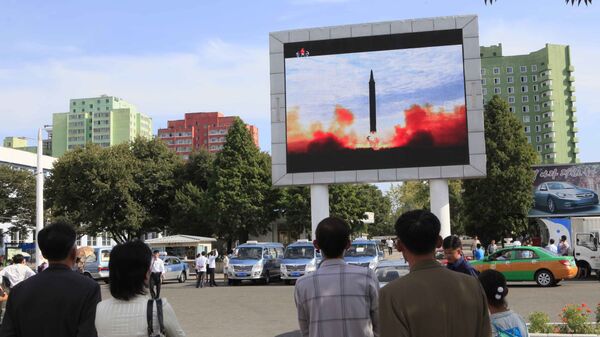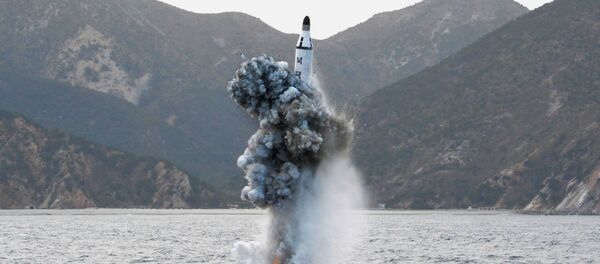The report came from the National Intelligence Service (NIS), who met behind closed doors with the South Korean National Assembly's Intelligence Committee on Thursday. According to an anonymous parliamentary source with Yonhap News, NIS claims that the DPRK will not have a functional ICBM until they can overcome this hurdle.
"[The NIS said that] the North had recently carried out a few missile engine tests, but it is still not at a stage where it can complete its ICBM development," the anonymous source told Yonhap.
North Korea has not launched a missile since September, but in July 2017 they undertook two high-profile tests of the Hwasong-14 ICBM. The tests were both successes, with the latter test demonstrating that the Hwasong-14 could potentially hit any part of the continental United States.
But to reach that far, the Hwasong-14 would need an effective reentry vehicle. The second tested missile made it into space just fine, but the reentry vehicle broke into pieces when it attempted its return to Earth.
This is less a fault in North Korean engineering and more evidence of how difficult reentry vehicles are to build: they must be able to protect the warhead from temperatures of 12,600 degrees Fahrenheit (7,000 degrees Celsius) and speeds topping out at Mach 24 (roughly 18,500 mph).
Not only do reentry vehicles take considerable technical knowhow to build, the NIS said, they also require a variety of specialized and expensive components. The intense regimen of international sanctions levied against North Korea by the US, UN, EU, and others have thus slowed the construction of a reentry vehicle by the DPRK.
The NIS also said that US military pressure, such as the deployment of aircraft carriers to the Korean Peninsula and the buzzing of North Korean airspace with strategic bombers, is a major contributor to Pyongyang's hesitancy to test another missile.
Another unusual factor, according to the Center for Strategic and International Studies, is that North Korea typically refrains from testing missiles in the last quarter of the calendar year. Nobody is really sure why this is the case; it may just be a coincidence.
But they will launch again, the NIS insisted. It's only a matter of time.
A functional ICBM is seen as crucial for North Korea, as currently they have very weak leverage against the US directly — they can only threaten US allies like South Korea and Japan. An ICBM would give them leverage over the US mainland, which could potentially drive a wedge between South Korean and US security interests.





